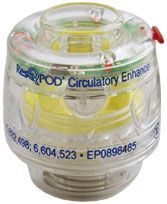CGFD37
Forum Probie
- 10
- 0
- 0
I'm in the process of writing a paper on the effects of hyperoxygenation in the pre-hospital setting. It's something that bugs me, every patient get 15LPM NRB, regardless thier respiratory condition. Not only do I think it's abusing O2 thearpy, the more I have researched it, the more information there is available on how hyperoxygenating patients can be harmful. If anyone has any information on this subject, that would be most helpful. Thanks guys!

